
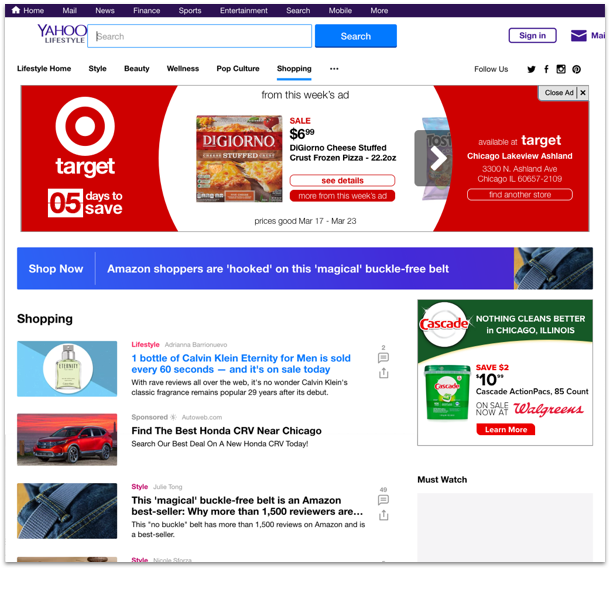
Shoplocal's systems were highly effective at delivering discount offers from retailers like Target or Walgreens to users who sought out weekly ads. But reaching beyond that self-selecting audience was a challenge. Shoplocal built countless geo-targeted banner ads for clients, loaded with locally relevant offers, but it was nearly impossible to hit users with just the right offer when shopping was top of mind.
In the early days of Shoplocal, we bought out a fledgling competitor called Shoppinglist.com. Having been with Shoplocal since those early days, I knew we owned the URL, so I proposed a simple tool to make it work for the company.
I drew this cartoon to help communicate the idea.
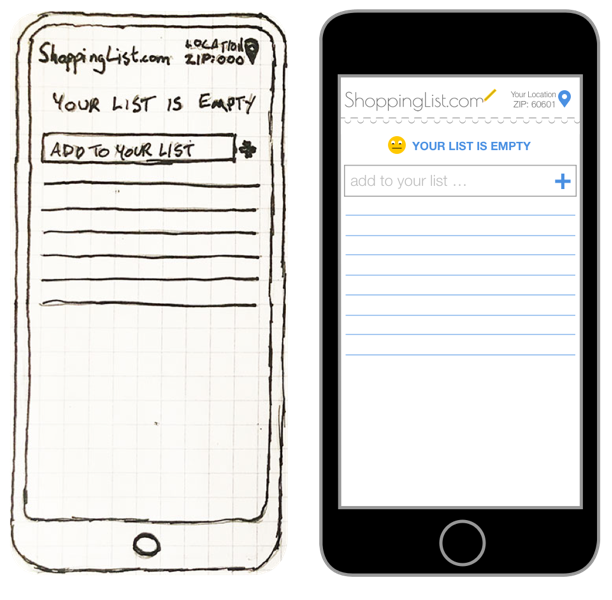
The value proposition was an ultra-lightweight app (as well as a website with similar functionality) to do one easy thing: create and store a shopping list. I designed the UI rapidly, as part of a "hack-a-thon" Shoplocal hosted on an annual basis, but the simplicity was intentional. I wanted a look and feel no more intrusive than notebook paper. Developers on my team worked from sketches to build the functionality, while I designed the UI and handled front-end coding in parallel.
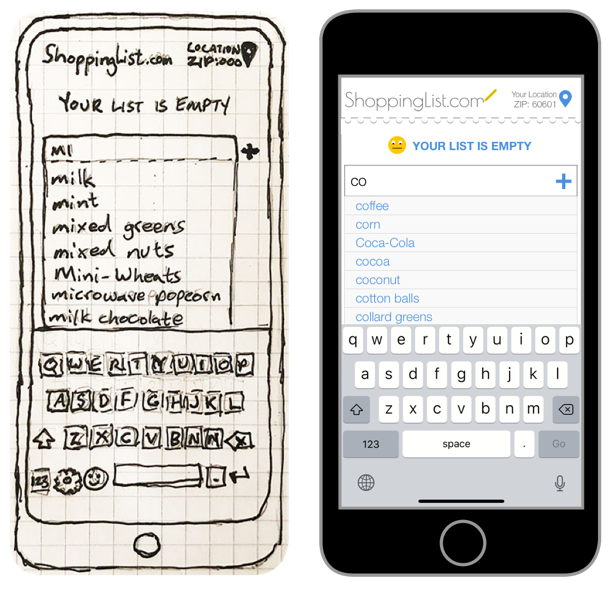
Offering users our own intelligent auto-complete suggestions was a small but not insignificant value add, simplifying list creation by offering items likely to appear on a shopping list.
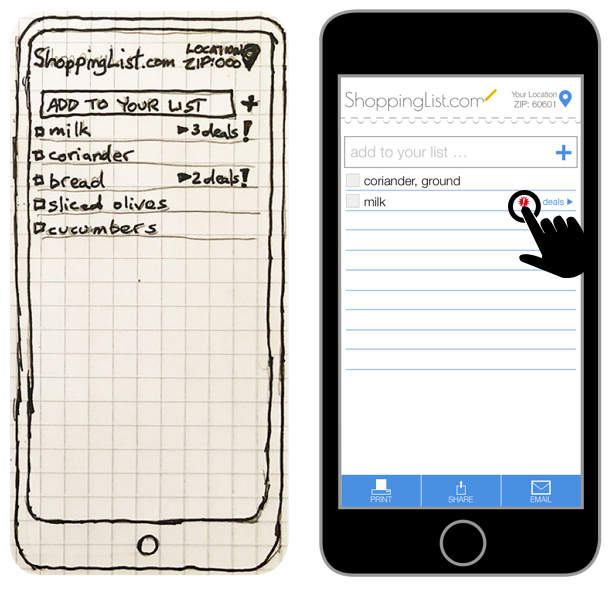
But the value proposition that put this app ahead of existing competitor apps like OurGroceries or OutOfMilk, was a behind-the-scenes search of Shoplocal's entire database (an impressive list of retailers at the time) to find offers relevant to both the list and the user's location.
For items without any local offers, ShoppingList simply remembers the entry. But when a relevant offer is found, users are prompted to have a look.
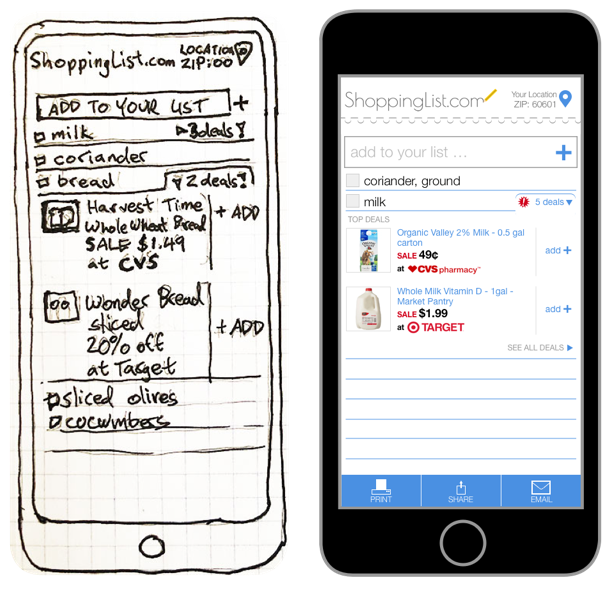
The app pushes retailer offers to users in a simple, no-frills manner, designed (a la Google ads) to look like information, to catch users at as receptive a moment as one could hope for. All data in Shoplocal's system would need to be utilized, but retailers could pay for prioritization.